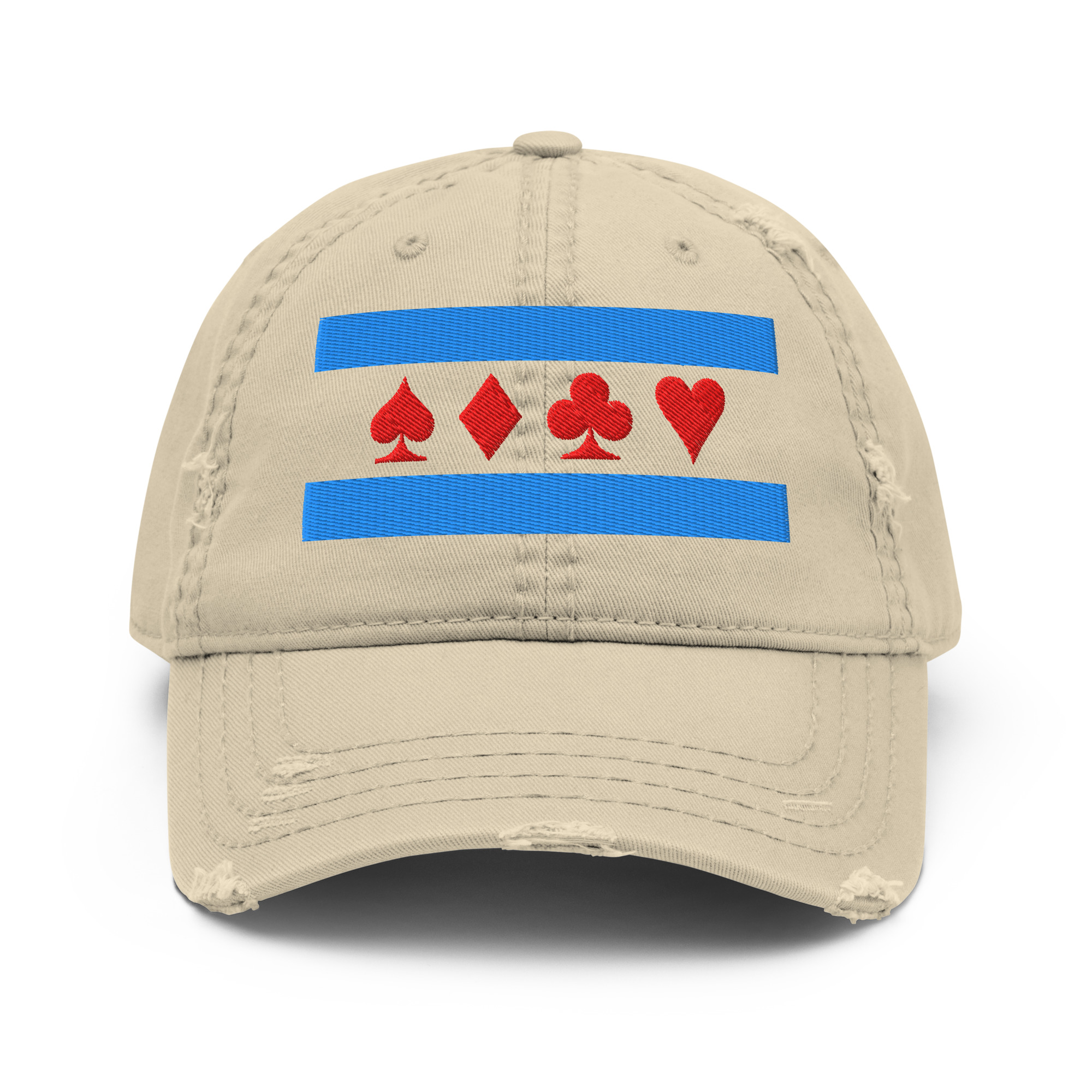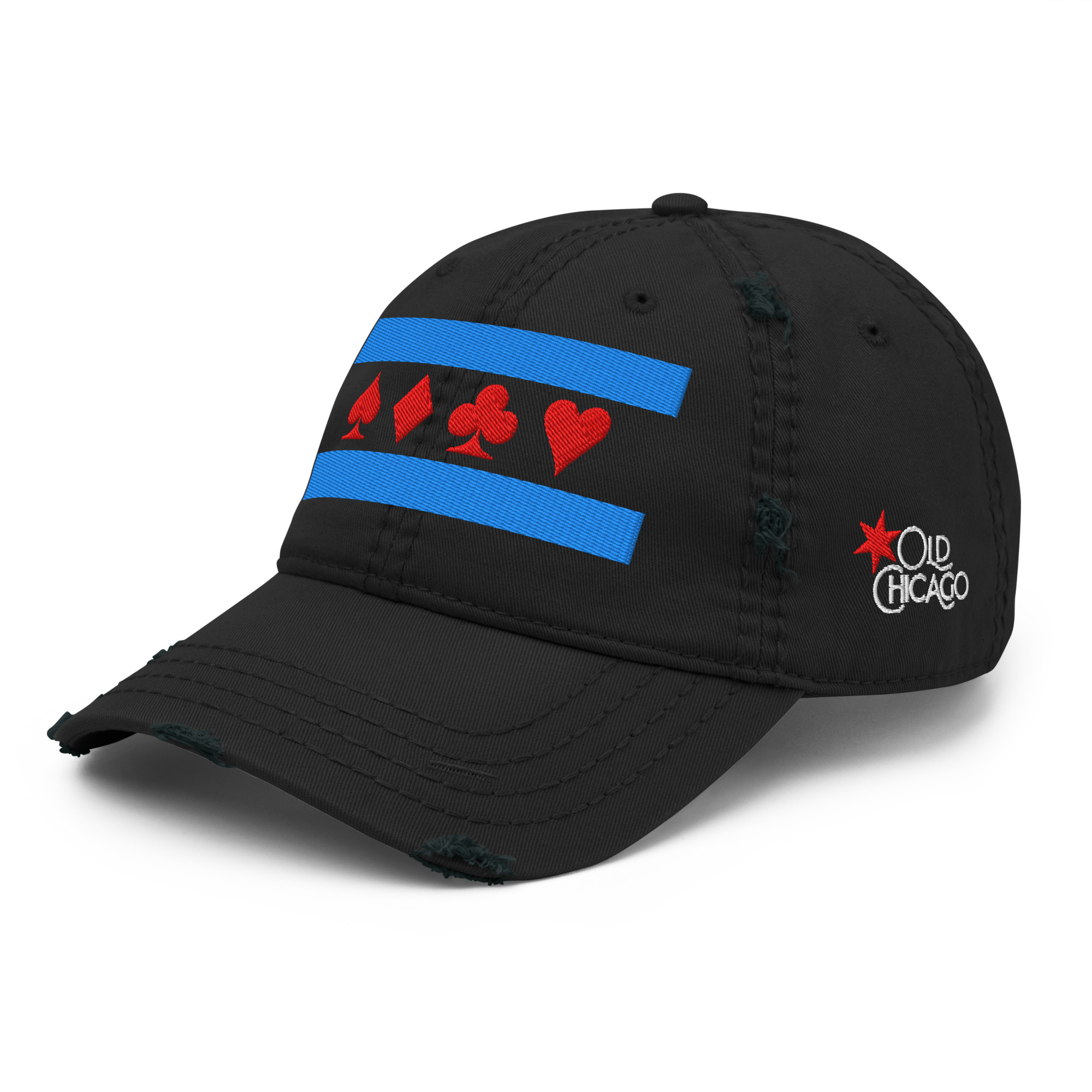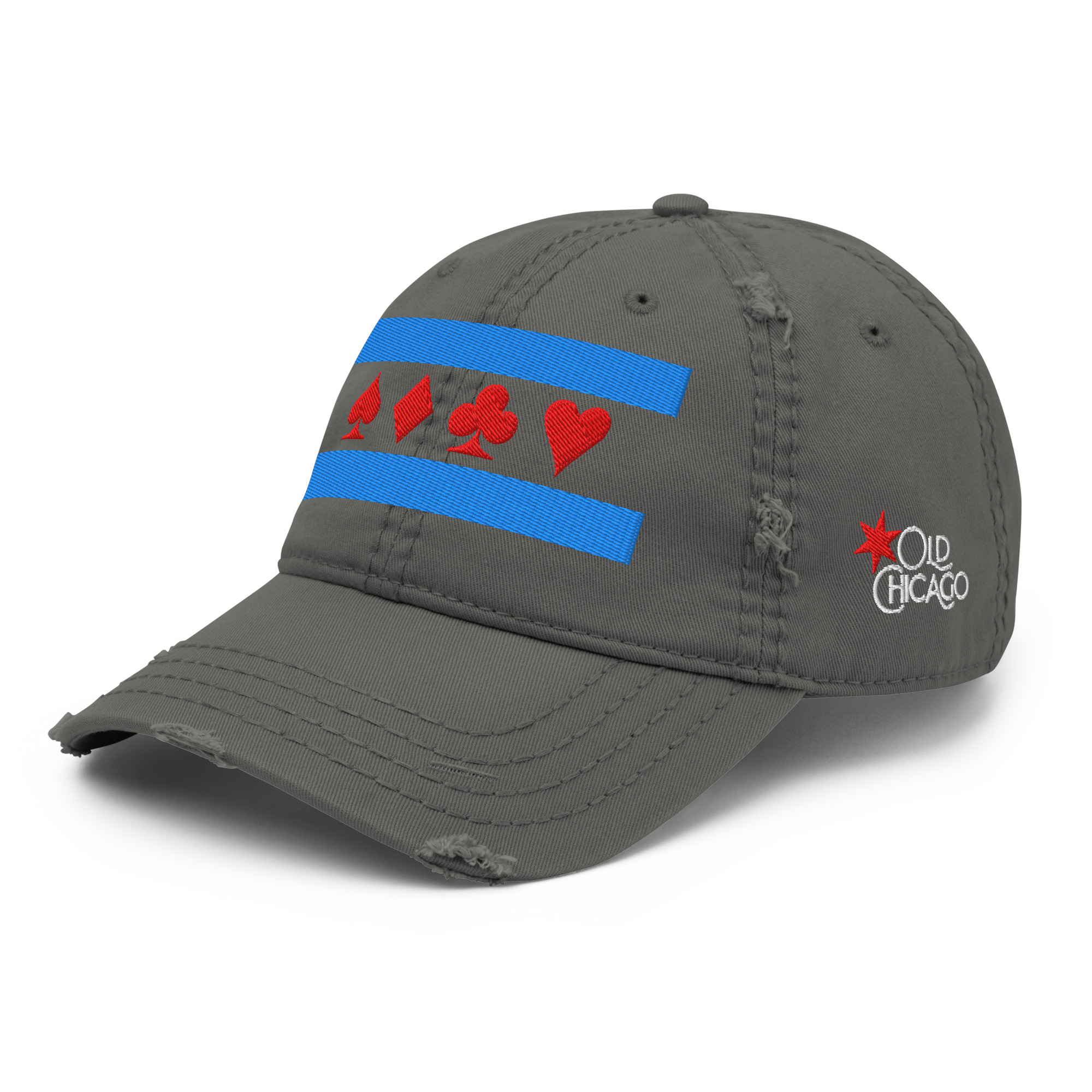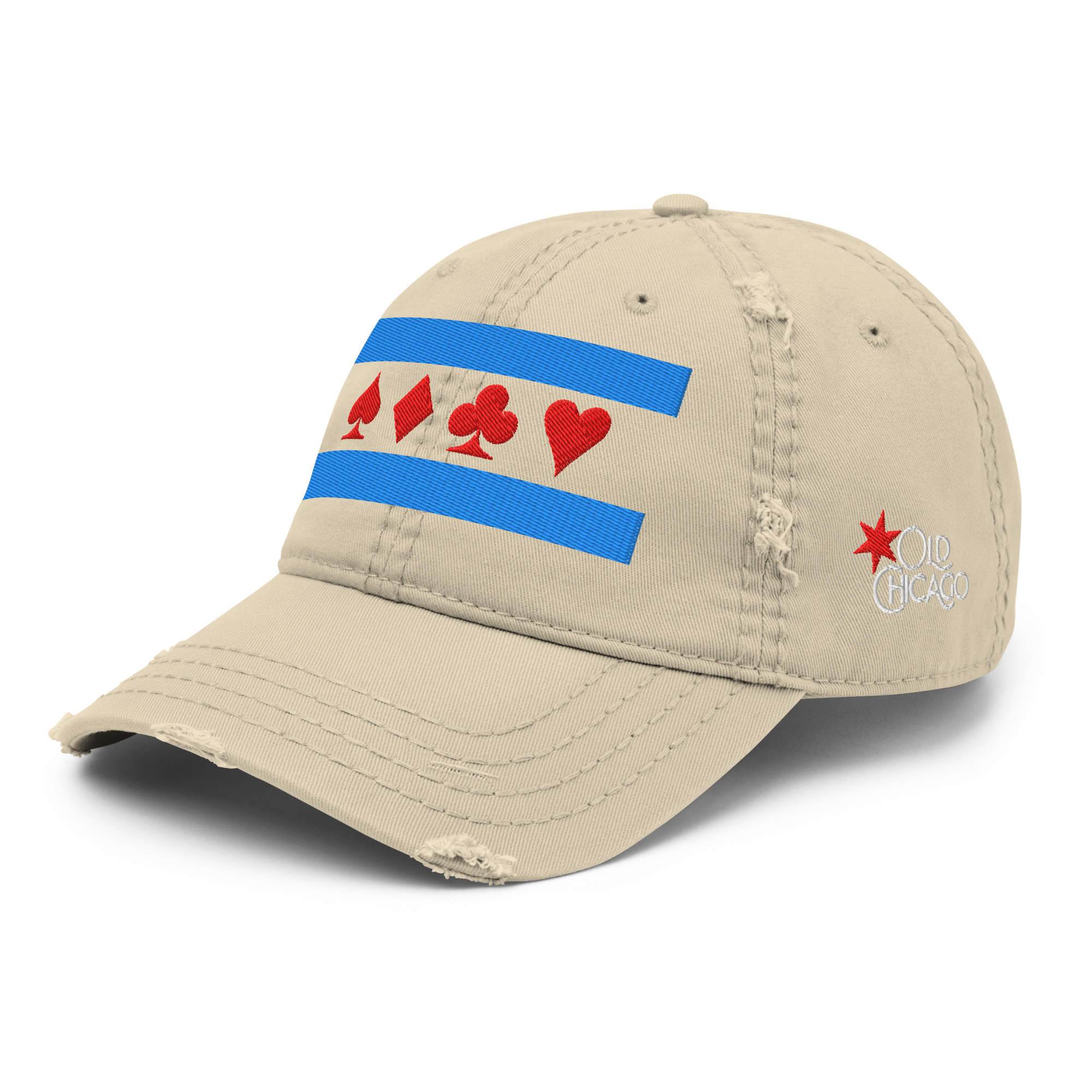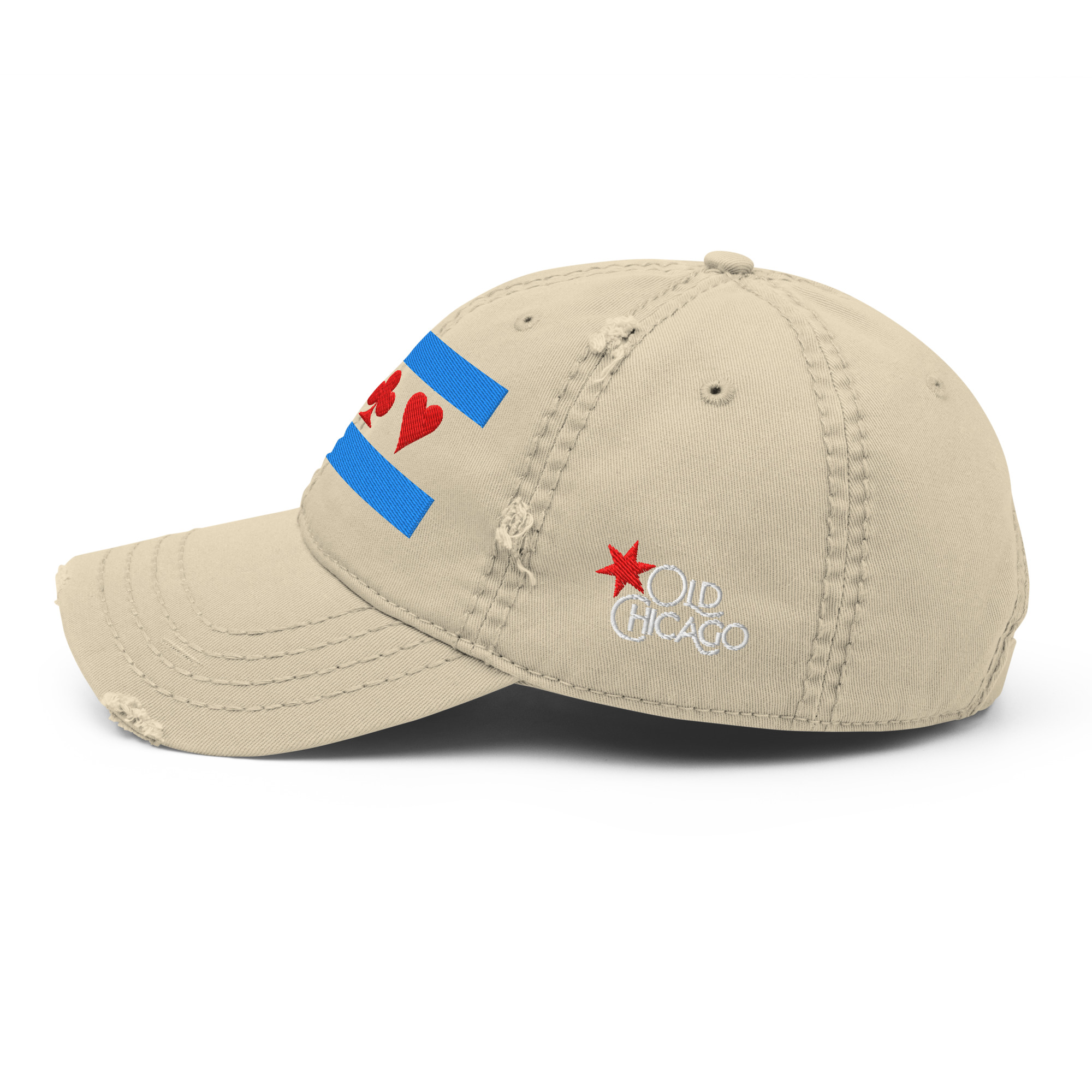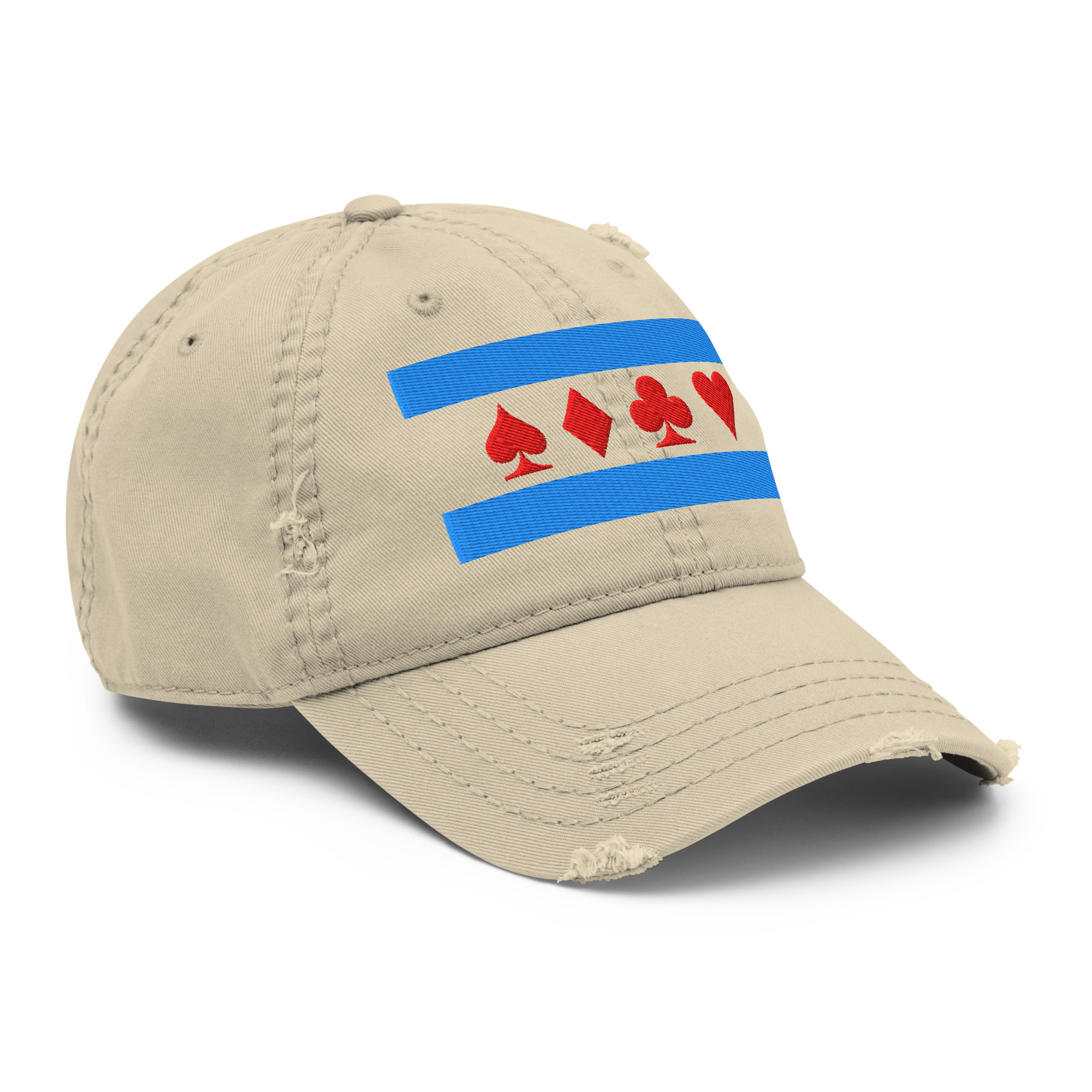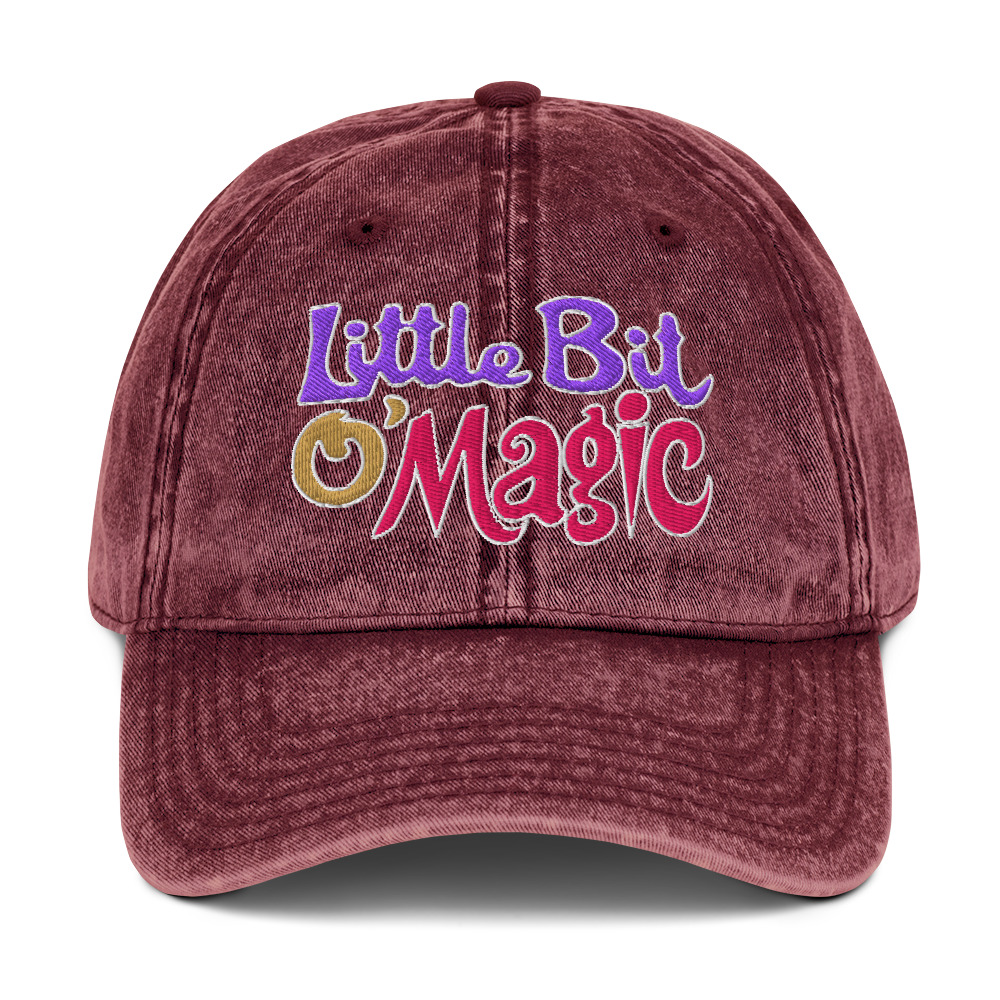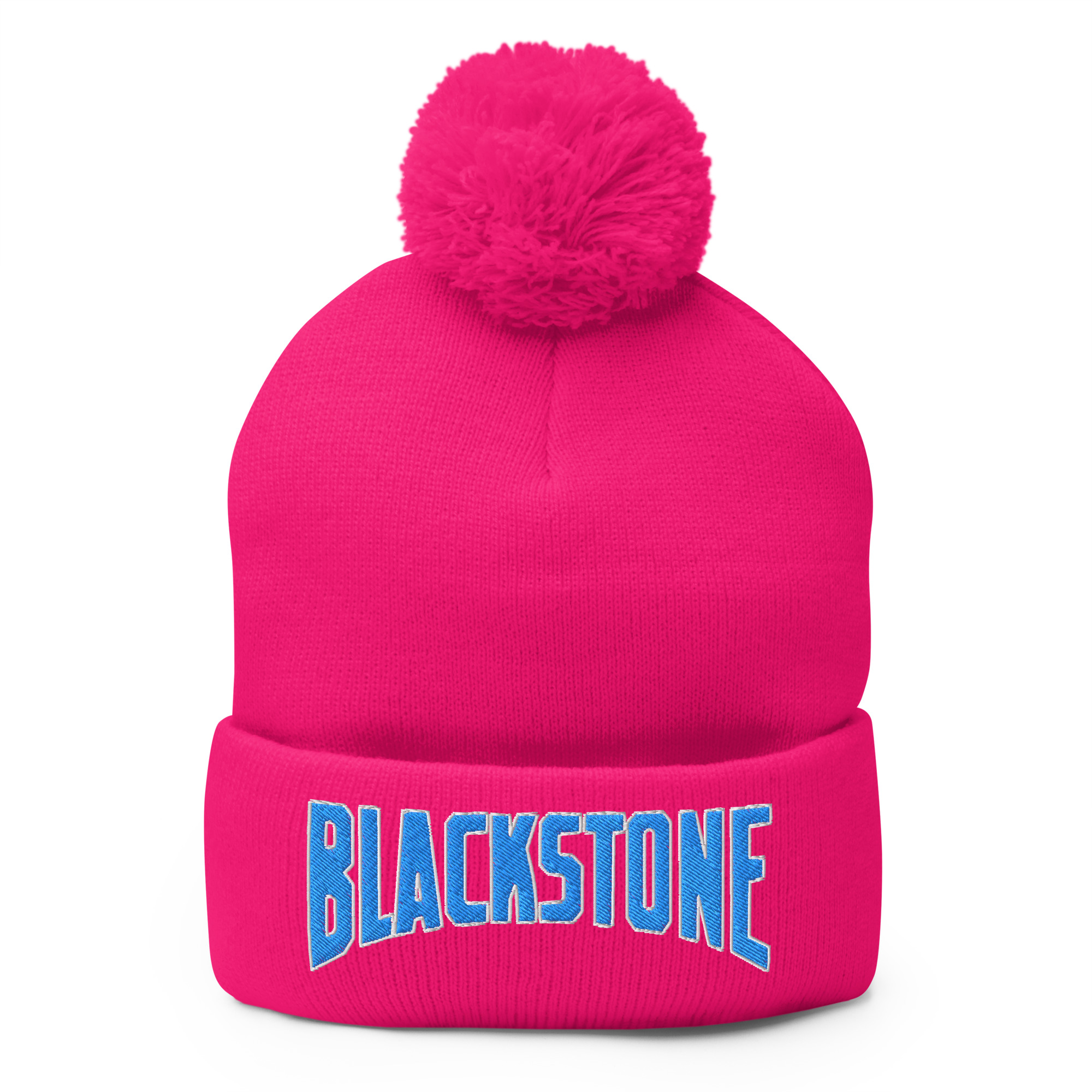Description
- ✦ Original Chicago Flag-inspired Embroidery with four suits replacing stars – a nod to the city’s card culture
- ✦ Original remix design featuring playing card suits
- ✦ Four red suits replace traditional stars
- ✦ Clubs ♣ Diamonds ♦ Hearts ♥ Spades ♠
- ✦ Distressed finish for that authentic vintage Chicago character
- ✦ 100% pre-shrunk cotton twill – built to last like the legends it honors
- ✦ Soft crown with comfortable, broken-in feel
- ✦ 6 sewn eyelets for breathability during those long Chicago summers
- ✦ 6 stitched rows on brim for durability and classic style
- ✦ 6-panel unstructured cap with low profile for effortless wear
- ✦ Seamed front panel without buckram for comfortable fit
- ✦ Adjustable hook and loop closure – one size fits most
- ✦ This product is made on demand. No minimums.
The Chicago Flag: From Forgotten Municipal Symbol to America’s Most Beloved City Banner
The Harvard Lawyer Who Wrote His Own Rules—Then Won
In 1917, Wallace deGroot Cecil Rice—a Harvard-educated lawyer turned Chicago Tribune journalist—pulled off one of history’s greatest design coups. Hired to write the rules for Chicago’s flag competition, Rice crafted eleven meticulous guidelines: keep it simple enough for a child to draw, use meaningful symbolism, limit colors, and absolutely no lettering or seals. Then, in a move of pure Chicago brass, he entered his own competition. For six weeks, Rice covered his Lincoln Park home’s living room floor with colorful rectangles, testing combinations on everyone from literary friends to delivery boys and milkmen. On April 4, 1917—the same day the U.S. entered WWI—Chicago’s City Council unanimously approved Rice’s design.
Four Stars That Tell Chicago’s Story
Rice’s genius lay in creating a flag that could grow with the city. His original 1917 design featured only two six-pointed red stars, deliberately positioned toward the left to leave room for future additions. The choice of six points was revolutionary—when Mayor “Big Bill” Thompson tried changing them to five-pointed stars in 1928, claiming the six-pointed ones were “British,” Rice defended his creation: “This is peculiarly and singularly a Chicago star, made by a Chicagoan for his greatly loved city.” Today’s four stars commemorate the Great Chicago Fire (1871), the World’s Columbian Exposition (1893), the Century of Progress (1933), and Fort Dearborn (1803)—each with six points representing different aspects of Chicago’s character.
From Forgotten Relic to Punk Rock Symbol
Despite its elegant design, Chicago’s flag entered remarkable obscurity. By 1928, just eleven years after adoption, it was “generally forgotten” according to the Associated Press. In 1958, when a hardware store owner raised the flag, puzzled neighbors mistook it “for everything from the flag of Israel to that of one of the Scandinavian countries.” The unlikely revival began in 1971 when Chicago police started wearing flag patches on their leather jackets. When those jackets hit surplus stores, Chicago’s punk rockers bought them cheap—and kept the flag patches on. This accidental fashion statement helped seed the flag’s cultural revival.
The 1990s Explosion and Tattoo Phenomenon
Chicago’s love affair with its flag truly ignited in the 1990s when young adults seeking identity in their adopted city embraced it as a symbol of belonging. By the 2000s, it had become one of America’s most popular civic tattoos. Tattoo artist Nick Colella of Great Lakes Tattoo got so many requests he created an educational poster: “No one knew what it was about, but they wanted it.” The website chicagoflagtattoos.com documents hundreds of variations, from simple reproductions to creative interpretations with poppyseeds arranged as stars on hot dog tattoos. In 2004, the North American Vexillological Association ranked Chicago’s flag second-best among 150 American city flags, scoring 9.03 out of 10.
The Playing Card Remix: Chicago’s Gambling Spirit
Our creative reinterpretation replaces the traditional six-pointed stars with the four playing card suits—clubs, diamonds, hearts, and spades—honoring Chicago’s rich gambling history and the city’s perpetual game of chance. From the riverboat casinos to the backroom poker games of Prohibition, from the policy wheels of Bronzeville to the commodity traders betting on futures, Chicago has always been a city that understands the odds. The playing card suits represent four different ways to win in Chicago: Clubs for force, Diamonds for wealth, Hearts for passion, Spades for work—each one a path to making it in the city that says “I Will.”
Why Chicago’s Flag Conquered Culture
Unlike most American city flags—typically illegible seals on colored backgrounds, what vexillologists call “S.O.B.” (Seal On a Bedsheet) flags—Chicago’s design achieves genuine popular affection crossing all demographic lines. Roman Mars’s viral 2015 TED talk declared: “People love Chicago more because the flag is so cool.” Today, the flag appears everywhere: Revolution Brewing’s brand identity, Cubs’ Win flags at Wrigley, Michigan Avenue boutiques, neighborhood dive bars, social media profiles, and permanent tattoos. The flag has become what Wallace Rice always intended: a visual embodiment of Chicago spirit.
Why This Remix Collection Matters
The Chicago flag belongs to the people, not the politicians. Its journey from competition winner to forgotten relic to beloved icon proves that symbols gain power through grassroots adoption, not official decree. When punk rockers kept cop jacket patches on, when tattoo artists got tired of explaining the stars, when young Chicagoans claimed it as their discovery—that’s when the flag became real.
Our playing card suit variation continues this tradition of creative ownership. Just as Chicago remixed German beer gardens into neighborhood taverns, Italian beef into Maxwell Street, and Southern blues into electric, we’re remixing the flag to tell new Chicago stories. The suits speak to Chicago’s gambling spirit—not just in casinos, but in every immigrant who bet everything on a new life, every entrepreneur who risked it all on an idea, every artist who chose Chicago over safer cities.
“Five-point stars are the symbols of states and could manifestly have no place in a municipal flag. This is peculiarly and singularly a Chicago star, made by a Chicagoan for his greatly loved city.”
— Wallace Rice, defending his six-pointed stars against Mayor Thompson, 1928
Wear your hand in the Chicago game.
From Wallace Rice’s living room floor to punk rock jackets to this creative remix, the Chicago flag proves that the best civic symbols are the ones citizens make their own. Deal yourself in.
Heritage Tribute Collection: This design is an original creative interpretation inspired by the Chicago flag (designed 1917, public domain). The playing card suit variation is our artistic remix celebrating Chicago’s cultural heritage. Not an official City of Chicago product. The Chicago flag design itself is in the public domain. Part of Vintage Chicago’s mission to celebrate and reinterpret Chicago’s iconic symbols for modern wearers.

